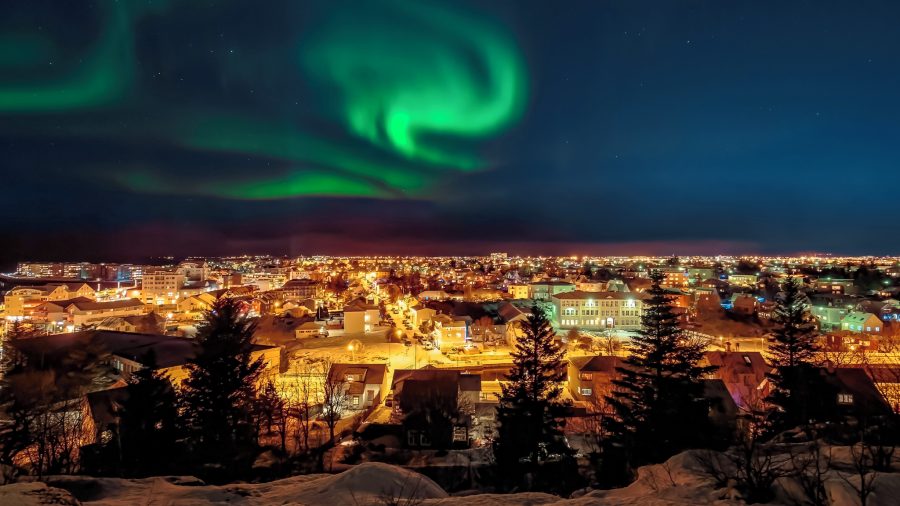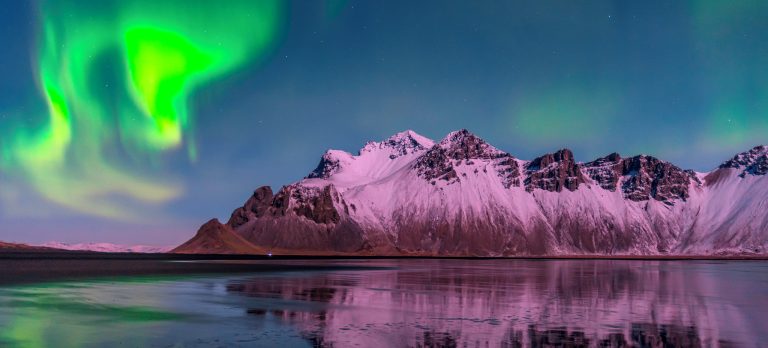What could be more enchanting than jetting off to Iceland and ticking the Northern Lights off while you’re at it? No, we can’t think of anything either. So we’ve put together this handy guide about how to have an Icelandic aurora adventure to remember...

Book your Discover More break
The first step in making this happen? Booking a Discover More break with a Northern Lights tour included at selected hotels. And the bonus is, you’ll have plenty of time for a skin-nourishing pamper at the Sky Lagoon, go wild and explore more Icelandic countryside, and uncover the quirkiness of the capital, Reykjavík. Magical days away are in the bag! And while this kind of city break can be truly romantic, Iceland’s a trending destination for solo travel too – that's thanks to its safe areas, well-trodden paths, and good signal generally.

Choose the right month
While the aurora season runs roughly from late August through to mid‑April, our Discover More breaks are available between October and April. So start refining your search during these months. But our pro recommendation for seeing the Northern Lights? Although sightings aren’t guaranteed, to give you the best chances, opt for September, October, February or March.
But why? It’s because of the equinoxes. Just to get scientific for a sec, that means the tilt of the earth increases geomagnetic activity, so you’re more prone to catching the spectacle in action. Plus, nights are longer in the deep winter months (that’s November to February), though weather can be a bit more unpredictable.
Monitor the forecast
You'll be told when your tour is during your getaway (along with your pick-up time), but it’s good to stay looped into what the weather’s due to be like. That way, you’ll know what to expect – and checking the weather apps always builds our pre-holiday excitement!
Psst, 2026 is said to be especially brilliant for geological conditions to spot the Northern Lights! So if you’ve had an Iceland trip in mind for a while now, we’d bump it up the bucket list.

Gear up – what to bring and wear
Grab your suitcase (don’t forget – you'll have 22kg baggage and 10kg hand luggage included in your booking) and a pen and paper, and jot these down:
- Warm layers (thermal base, insulated outerwear, windproof/waterproof jackets and trousers).
- Gloves, hat, a scarf, etc.
- Good footwear that handles cold/wet/slippery terrain.
- Camera gear if you want photos: wide‑angle lens, tripod and spare batteries (the cold drains batteries faster).
- Pocket snacks – you'll generally be offered a hot chocolate when you go, but having something to nibble on couldn’t hurt.
- A torch or your phone – just to help you get from A to B, as it’ll be dark.
Eyes up, phone down
Okay, so we said pack camera kit for photos, but there’s a caveat to follow – being present in the moment is an unbeatable feeling. So although the Northern Lights tend to show up well on cameras and phones, and we appreciate you’ll want tangible memories, it’s worth going cold turkey with the tech. For as long as you can, at least. Sure, take a couple of photos if you must – bragging rights and all that – but be sure to savour every second of the magnificent aurora borealis with your own eyes.
Need more inspo?
Put the kettle on and have a good read of even more of our Iceland blogs here.
Posted: 17th Oct 2025. Updated: 4th Nov 2025.

